Can bearded dragons eat wax worms? This is a common question among reptile owners who want to treat their pets. Wax worms are soft, sweet, and often irresistible to bearded dragons. But are they a healthy choice?
Can bearded dragons eat wax worms safely and often? The answer isn’t as simple as yes or no. These insects are high in fat and low in calcium, which makes them more of a treat than a staple food.
In this article, you’ll learn everything you need to know. We’ll cover the benefits and risks, how often to feed wax worms, and better alternatives for daily nutrition. If you want to keep your bearded dragon healthy and happy, understanding their diet is the first step.
Can Bearded Dragons Eat Wax Worms? A Clear Answer for Owners
Can bearded dragons eat wax worms? Yes—but there’s more to it than a simple yes or no. Wax worms can be a tasty treat, but they must be fed with caution to avoid long-term health issues.
Understanding the Bearded Dragon Diet: Can Bearded Dragons Eat Wax Worms as Part of It?
Bearded dragons are omnivores. That means they thrive on a mix of insects and plant-based foods. Insects like crickets, roaches, and worms provide protein and fat. Meanwhile, leafy greens and vegetables offer essential vitamins and minerals.
A healthy diet should reflect this balance. For juveniles, about 70% of their intake should come from insects. Adults, on the other hand, need more plant matter—around 70% greens and 30% protein. Sticking to this ratio helps prevent obesity, metabolic bone disease, and other health problems. Offering variety is key to supporting growth, digestion, and energy.
Yes, But in Moderation—Can Bearded Dragons Eat Wax Worms Often?
Can bearded dragons eat wax worms frequently? Yes—but only as an occasional treat. Wax worms are soft, easy to eat, and very appealing due to their high fat content. However, this same fat is what makes them risky if fed too often.
Feeding wax worms regularly can lead to rapid weight gain, poor appetite for healthier foods, and even liver issues. They lack calcium and have a poor calcium-to-phosphorus ratio. For that reason, wax worms should never replace staple insects like Dubia roaches or crickets. Use them as a reward, not a routine.
Common Misconceptions About Wax Worms: Can Bearded Dragons Eat Wax Worms Without Risk?
Wax worms may seem like an easy win, especially for picky eaters. But several myths cause owners to overuse them—often without realizing the long-term harm.
Pet Store = Safe? Not Always
Many owners assume wax worms are completely safe just because they’re sold in pet stores. It’s true that bearded dragons can eat wax worms, but that doesn’t make them healthy. Their high fat content and poor calcium-to-phosphorus ratio make them one of the least nutritious feeders available.
Wax worms are closer to junk food than real nutrition. Feeding them too often can displace more essential foods like crickets, roaches, and leafy greens.
Do Dragons Really Need Wax Worms to Stay Interested?
Another common belief is that bearded dragons need wax worms to stay excited about eating. That’s not true. While the sweet taste makes them appealing, regular feeding can quickly lead to food refusal. Your dragon may start ignoring healthier feeders or veggies altogether—leading to a poor diet and behavioral issues.
More Isn’t Better: The Hidden Risks
Some owners think giving just a few extra wax worms won’t matter. Unfortunately, that’s not the case. Even moderate overfeeding can lead to obesity, nutritional imbalances, and a stubborn fixation on fatty foods. Breaking the habit is stressful—for both the dragon and the owner—and can take weeks of careful dietary correction.
When to Offer Wax Worms Safely: Can Bearded Dragons Eat Wax Worms in Special Situations?
There are a few situations where wax worms can be helpful. For example, if your bearded dragon is underweight, recovering from illness, or refusing food, a few wax worms may encourage eating. Their sweet taste and soft texture make them ideal for picky or sick dragons.
Still, portion control is critical. Offer just a few worms at a time, no more than once or twice per month. Always pair wax worm feedings with proper hydration and a return to balanced meals right after. Used wisely, wax worms can be helpful—just not too often.
Nutritional Breakdown and Insect Comparison for Bearded Dragons
Before feeding wax worms to your bearded dragon, it’s important to understand what they actually offer nutritionally. In this section, we’ll explore whether wax worms are a smart addition to your beardie’s diet—and how they stack up against other common feeder insects.
Inside a Wax Worm – Nutritional Profile and Key Facts
Wax worms are high in fat and moisture, which makes them soft and easy to eat—but not very nutritious. On average, wax worms contain around 15% protein and over 20% fat, making them one of the highest-fat feeder insects available. While bearded dragons can eat wax worms, they should never rely on them as a primary protein source.
Calcium is another concern. Wax worms have a poor calcium-to-phosphorus ratio, which can disrupt bone development over time. This imbalance increases the risk of metabolic bone disease, especially in younger dragons. Because of this, wax worms should only be offered occasionally—and always dusted with calcium powder before feeding.
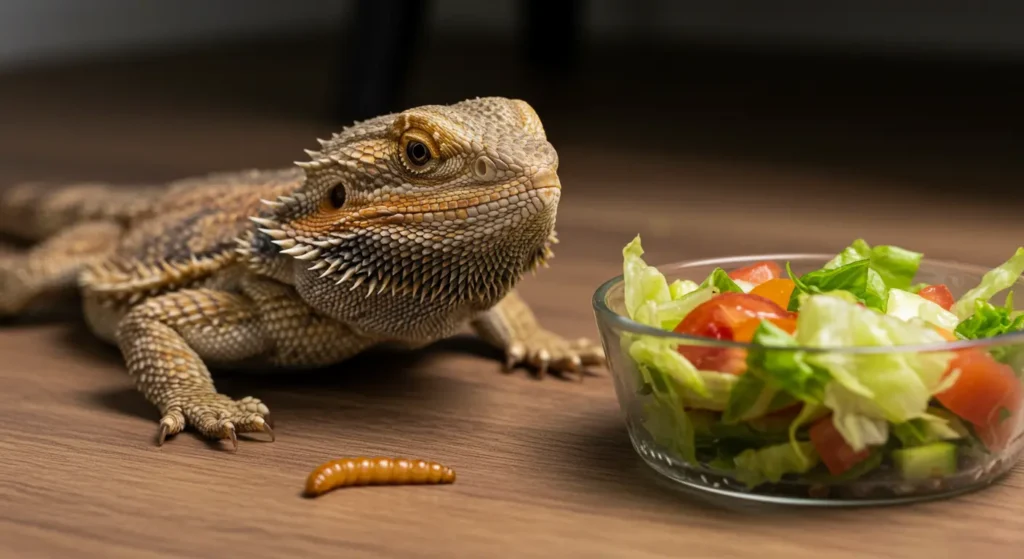
Wax Worms vs. Other Feeder Insects for Bearded Dragons
When comparing wax worms to staple insects like crickets, Dubia roaches, and hornworms, their nutritional shortcomings become clear. Crickets and Dubia roaches are higher in protein and lower in fat. They also offer a more favorable calcium-to-phosphorus ratio, which is essential for bone health.
Hornworms are another great option. They’re hydrating, low in fat, and still provide a decent amount of protein. In contrast, wax worms deliver mostly fat and very little nutritional benefit. That’s why experts consider wax worms a treat—not a staple—in a healthy bearded dragon diet.
Health Concerns From Feeding Too Many Wax Worms to Your Beardie
Feeding wax worms too often can quickly lead to health issues in bearded dragons. The most immediate concern is obesity. High fat levels contribute to rapid weight gain and lethargy. A dragon that fills up on wax worms may also stop eating healthier foods like greens and staple insects.
Over time, this can lead to poor digestion and nutritional imbalances. The lack of calcium combined with excess phosphorus may cause metabolic bone disease (MBD), which weakens the bones and spine. In severe cases, liver and kidney strain can also occur due to constant fat overload. Moderation is the key to keeping your beardie safe and healthy.
Can Bearded Dragons Eat Wax Worms Regularly? Understanding Cravings and Risks
Wax worms may seem harmless, but regular feeding can lead to serious behavioral and health issues in bearded dragons. In this section, we’ll explore why these fatty insects are so addictive—and what risks they pose when offered too often.
Wax worms aren’t the only high-fat insect bearded dragons may encounter. Some beetles can also pose risks if not chosen carefully. For a deeper look into insect safety, read our full guide on Can Bearded Dragons Eat Beetles?
Why Bearded Dragons Love Wax Worms: Taste and Texture Explained
Wax worms are soft, sweet, and full of fat—three things that make them irresistible to bearded dragons. Their squishy texture makes them easy to chew and digest, especially for young or picky eaters. But it’s the high fat content that triggers a stronger response.
Bearded dragons have evolved to seek out calorie-dense food when available. In the wild, this would be rare. In captivity, however, wax worms are easy to access—and their rich fat content activates the brain’s reward system. Over time, your dragon may begin to crave wax worms over other, more balanced feeders. This preference isn’t about nutrition—it’s about taste and survival instincts gone off track.
Signs of Wax Worm Addiction in Bearded Dragons
Feeding wax worms too often can create unhealthy feeding behaviors. One of the first signs is food refusal. Your bearded dragon might ignore its usual greens or staple insects like crickets or Dubia roaches. Instead, it will wait—or even beg—for wax worms.
Other signs include restlessness during mealtime, selective eating, and sudden disinterest in once-loved foods. Some dragons may even become aggressive when wax worms are offered, showing just how powerful this craving can become. If your beardie turns away from balanced meals and fixates only on wax worms, it’s time to make a change.
How to Help Your Bearded Dragon Break a Wax Worm Fixation
Breaking a wax worm addiction takes time, but it’s possible with patience and consistency. One method is going cold turkey—removing wax worms completely and offering only healthy alternatives. While this can be tough, many dragons will eventually give in and eat again.
A gentler method is slow weaning. Start by mixing wax worms with small amounts of greens or staple bugs. You can also try salads lightly coated in mashed fruit to reintroduce healthier textures and flavors. Always rotate insects like Dubia roaches, black soldier fly larvae, or hornworms to build variety. Over time, your dragon will begin to accept more balanced meals again.
Safe Feeding Tips: How Can Bearded Dragons Eat Wax Worms Without Harm?
Wax worms can be a fun treat, but feeding them the wrong way can lead to serious health issues. This section offers practical tips to help you feed wax worms safely—so your bearded dragon enjoys them without risking its well-being.
How Often Should Bearded Dragons Eat Wax Worms? Feeding Schedule by Age
Wax worms should never be a daily part of your bearded dragon’s diet. For baby beardies, avoid wax worms entirely unless your reptile is severely underweight or recovering from illness. Juveniles can have 1–2 wax worms per week as a rare treat. For adults, once every 10 to 14 days is a safe schedule.
Overfeeding can cause long-term health issues, so treat wax worms like candy—not a meal. Track how often you’re offering them and space treat days apart. It’s also a good idea to pair wax worms with calcium-rich greens or gut-loaded staple insects to help maintain nutritional balance.
How to Prepare Wax Worms for Bearded Dragons Properly
Before feeding wax worms to your bearded dragon, it’s important to prepare them the right way. Start by storing wax worms in a cool, well-ventilated container with fresh bedding to keep them clean and alive. Avoid feeding dead or dirty worms.
Although gut-loading wax worms is difficult due to their fat-based diet, you can still improve their value by dusting them with calcium powder just before feeding. Always use tongs or tweezers to avoid direct contact and reduce stress for your dragon. Cleanliness and proper handling help reduce the risk of parasites or digestive issues.
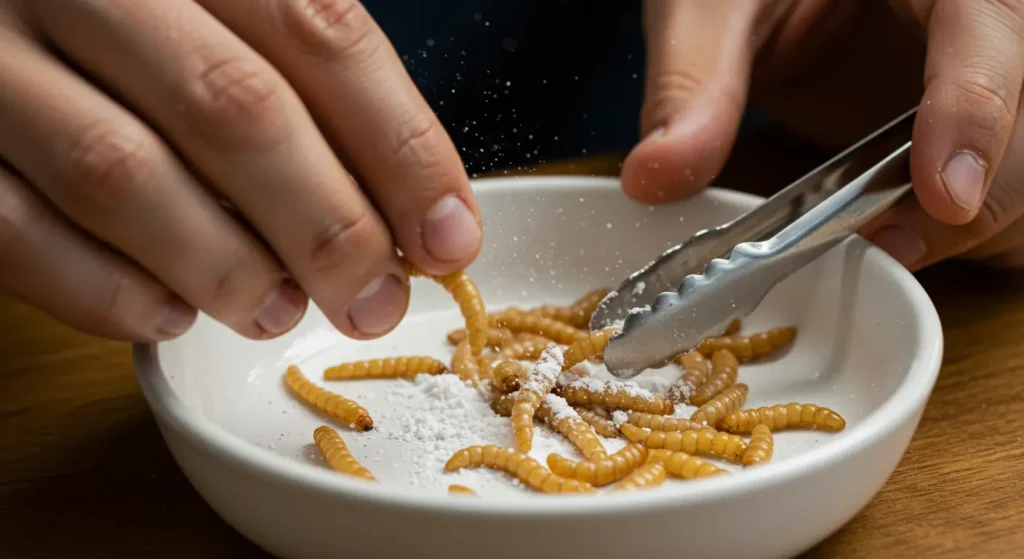
Healthy Insect Alternatives to Wax Worms for Bearded Dragons
If you want to avoid the health risks of wax worms, there are many better options. Dubia roaches, black soldier fly larvae (BSFL), and crickets are excellent staple insects. They’re low in fat, high in protein, and offer a much better calcium-to-phosphorus ratio.
For occasional variety, consider hornworms, silkworms, or superworms. These insects can keep your dragon’s diet interesting without compromising nutrition. Rotate these feeders throughout the week to provide both balance and enrichment. A healthy diet isn’t just about avoiding the wrong food—it’s about offering the right ones consistently.
Are Wax Worms Good for Bearded Dragons as Treats Only? The Final Verdict
Can bearded dragons eat wax worms safely? Yes—but only when used as an occasional treat. Wax worms may be helpful for beardies that are underweight, refusing food, or recovering from stress. Their sweetness and softness make them easy to accept.
Still, too much of a good thing can turn harmful. Wax worms should never replace daily feeders or become a regular habit. When used in moderation, they can provide a fun reward without disrupting your dragon’s health. Think of them like dessert—enjoyable, but only once in a while.
Conclusion
So, can bearded dragons eat wax worms? Yes—but only when offered with care, purpose, and moderation. While wax worms may be a favorite snack thanks to their soft texture and rich taste, they fall short when it comes to balanced nutrition. Feeding them too often can lead to obesity, nutrient deficiencies, and even food addiction in your bearded dragon.
If used sparingly and prepared correctly, wax worms can still serve a role—as a high-calorie reward or a short-term appetite booster. But they should never replace healthy staple feeders or calcium-rich greens. Understanding how, when, and why to use wax worms is what separates responsible reptile care from risky feeding habits.
In the end, the answer to can bearded dragons eat wax worms comes down to this: yes, they can—but it’s your job to make sure they don’t eat too many.

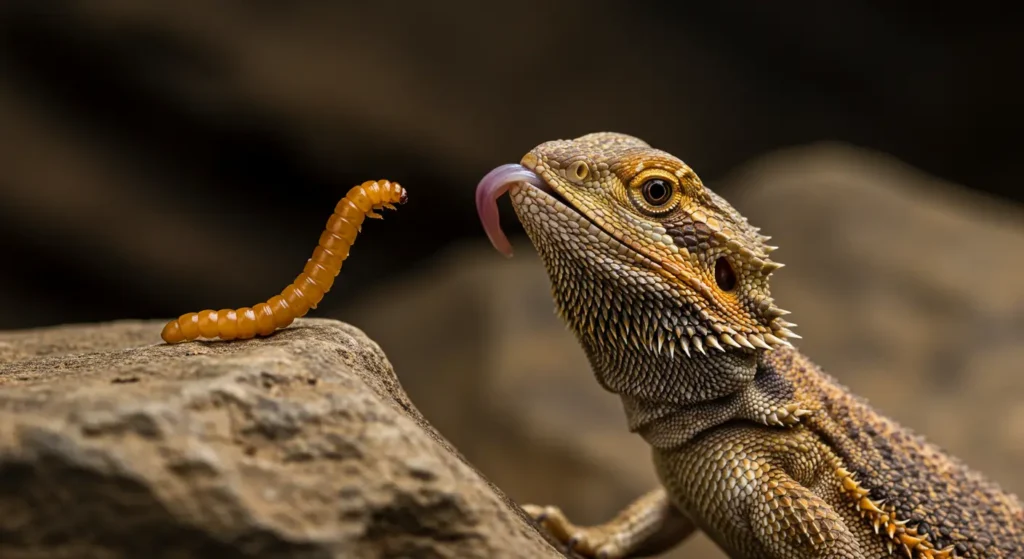
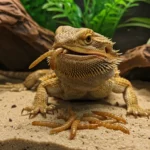

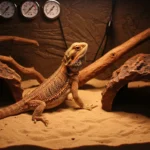

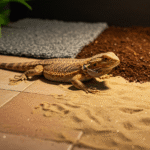
3 thoughts on “Can Bearded Dragons Eat Wax Worms? The Sweet Truth”